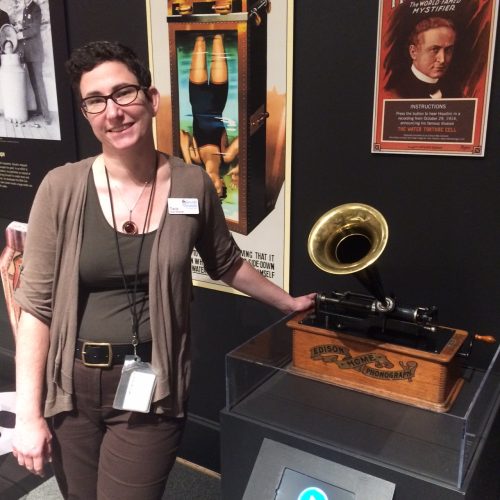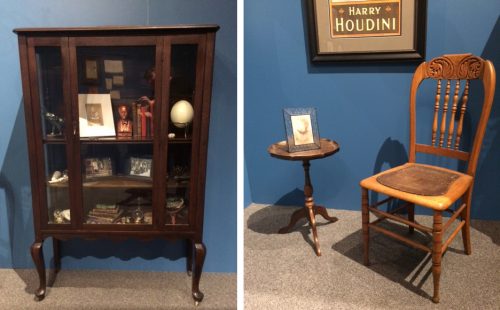Inescapable: The details make the story more real

This month’s edition of JMM Insights is brought to you by JMM Deputy Director Tracie Guy-Decker. Read more posts from Tracie by clicking HERE.
Tonight, our latest original exhibit Inescapable: The Life and Legacy of Harry Houdini opens at a members-only preview (by the way, if you’re reading this and you don’t yet have a ticket, I am sorry to tell you that we are completely sold out. Please come on Sunday to see the exhibit and take in the Magic of Jonestown outdoor festival).

I have written before about the power of objects in museums. One of our interns recently tackled the question Do Museums Need Objects, and another intern wrote yesterday about objects in this exhibit. But what I want to talk about are the physical items in exhibits that are not, in fact, artifacts.
I admit that I am a little biased in focusing on this for Inescapable, since one of the more charismatic of the props in the show, the Edison cylindrical record player, belongs to my husband, David. But that’s only part of the reason I wanted to talk about props with you. Before I worked in a museum, I admit that I never once thought about props in museum exhibits. Maybe you’re in the same boat. But in my opinion, they can be the details that complete the story.

In Voices of Lombard Street, we use a lot of props to create a fully immersive environment. In most instances, museum props are used to make your museum experience a more immersive one, and immersion helps make your visit there memorable (I discussed the importance of memorability when I wrote about how we measure the museum).

There are props integrated into interactive elements, and there are reproductions of photos and posters throughout the exhibit. But don’t worry, Dear Reader, we are not trying to fool you! Our labels will tell you everything you need to know about an object or image, including the nature of what you’re looking at (original or reproduction), where the artifact, image or prop came from, and who owns the intellectual property (if anyone). (Note that if there is no label on an object in a JMM exhibit, you can be pretty sure it’s a prop.)
And so, JMM Insider, you now have a choice as you encounter exhibits, whether here or at other museums. You can use your new insights to take a peek behind the scenes, noting where we Museum Professionals have introduced props to enhance your experience, or you can ignore the details on the labels and allow yourself to be fully immersed. Either way, at least when it comes to this exhibit, I trust you’ll enjoy the effect of all our effort.
